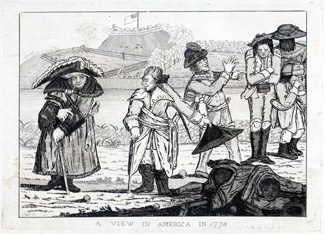The War for Independence, after Saratoga

After the defeat at Saratoga, Major General William Howe was replaced as commander of British forces in America by Major General Sir Henry Clinton. Burgoyne's surrender and the entry of the French into the conflict had two major military implications: it required the Secretary of State for the Colonies, George Germain, and British commanders to shift strategy by relying more heavily on the Royal Navy and British American loyalists to fight the Continental forces, and it expanded the geographical scope of the conflict into a world war.
Clinton abandoned Philadelphia in June 18, 1778, to consolidate his troops in New York before moving to Georgia and the South, where British leaders believed the stronger loyalist presence would substantially boost their military efforts. The campaign got off to a good start, with the capture of Savannah on December 29, 1778, but then stagnated as troops and supplies had to be shipped to the Caribbean to protect the sugar colonies there. Operations in America did not resume in earnest until 1780, when Clinton moved north to capture Charleston, South Carolina, which surrendered on May 12, 1780, along with 5,500 patriot soldiers. Clinton then detached a portion of his force under Major General Charles Cornwallis to continue to move northward, into North Carolina and Virginia, as the conflict became increasingly vicious.
Although slowed somewhat by Continental troops under Major General Nathanael Greene, Cornwallis moved into Virginia in May 1781, settling in Yorktown in August. The subsequent Yorktown campaign brought American and French armies under George Washington and the Comte de Rochambeau to bear on Cornwallis's position hugging the York River. His situation was made substantially more tenuous in September 1781 when the French Navy prevented a British fleet from entering into the Chesapeake Bay to assist him. After a siege, Cornwallis agreed to Washington's terms of surrender on October 18; his troops marched out of Yorktown and laid down their arms the next day.
After news of the surrender reached London, Parliament voted to suspend all offensive operations in America on February 27, 1782, and Lord North's ministry fell. The new administration, nominally under Charles Watson-Wentworth, Marquess of Rockingham, began formal peace talks with the Americans in Paris on April 12, 1782. On April 11, 1783, Congress declared the war at an end. The Treaty of Paris that formally ended the conflict—with the acceptance of American independence by Great Britain—was signed several months later, on September 23.
















